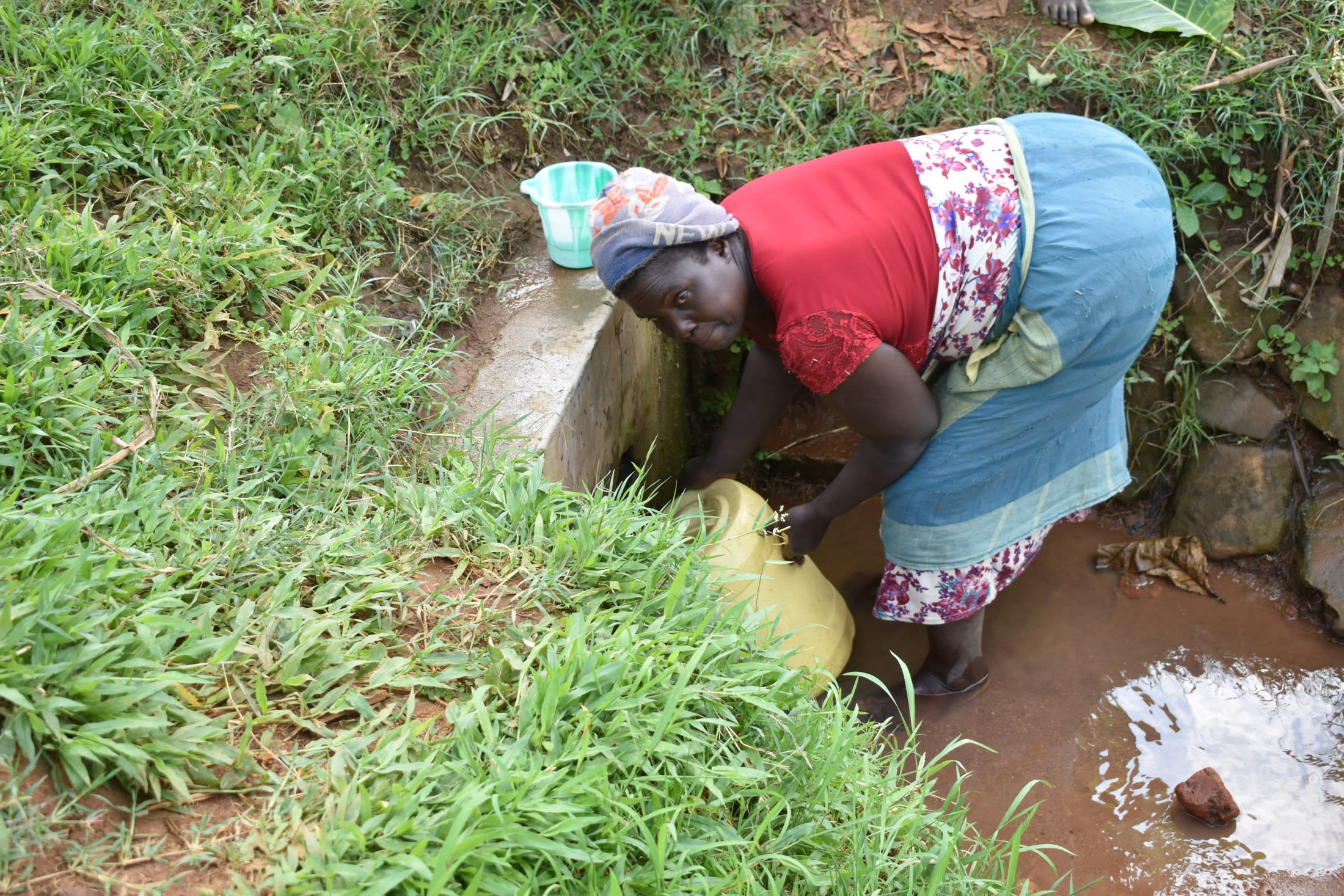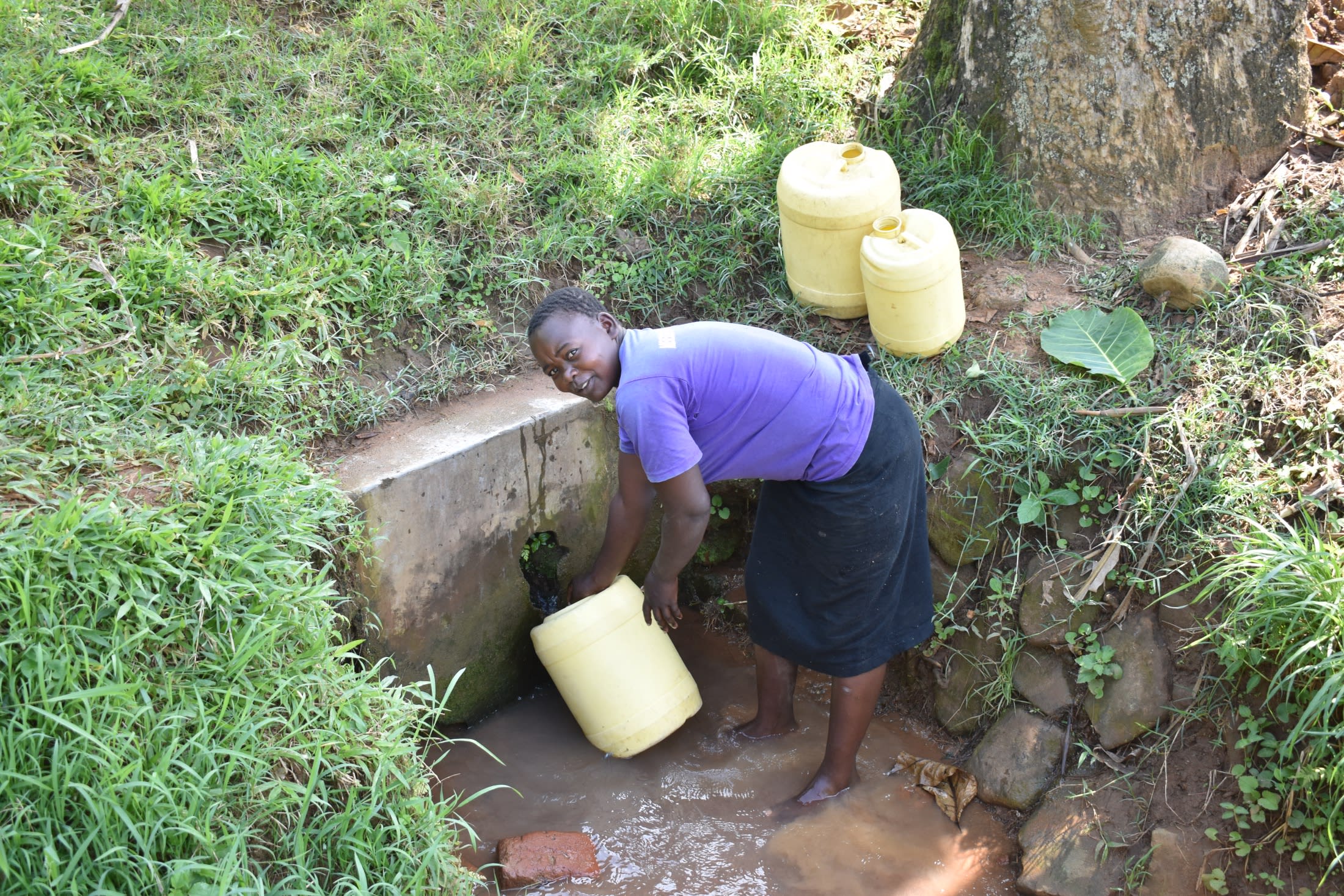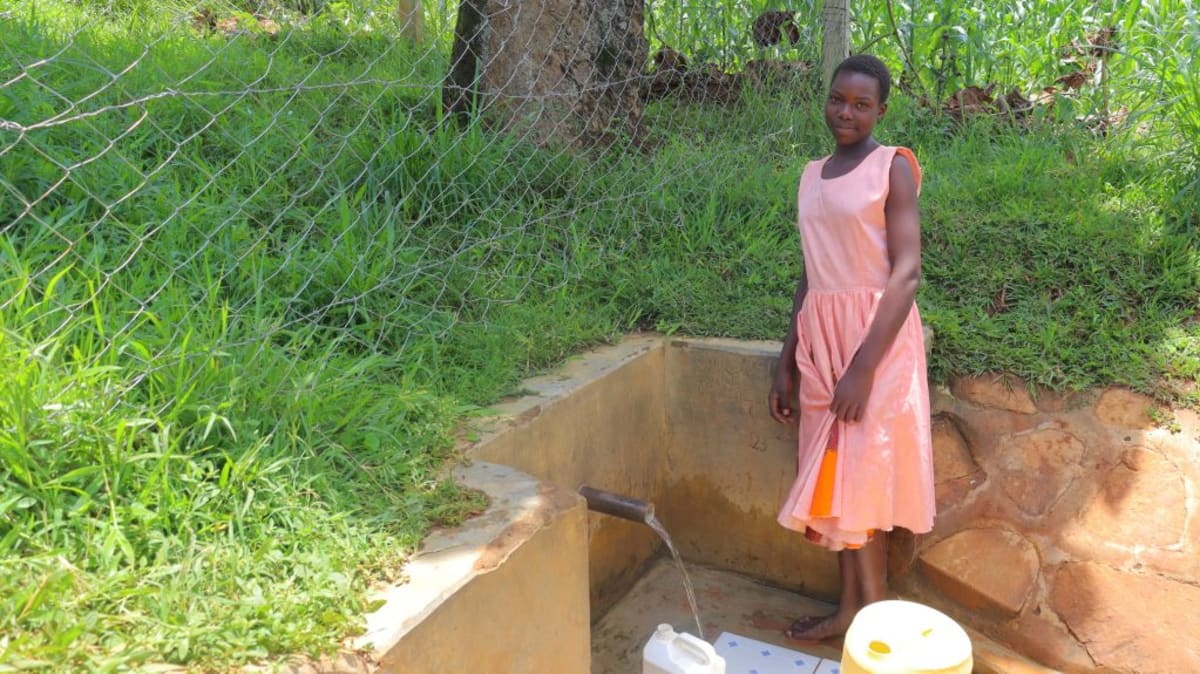The 244 community members who live in Eshiakhulo rely on Omusotsi Spring as their primary water source, but the water source is unprotected, its water is questionable, and it is nearly impossible to access when it rains.
"I have been forced to buy water twice when I came and found the water mixed with runoff and had no drinking water in the house," said 42-year-old farmer Ann Mukasia, shown below collecting water.

It is obvious that an attempt was made to protect the water point in the past, but it does not meet safety standards. And although the community does its best to keep the area clean and the grass cut back, there are still several issues with the structure itself.
There is a crumbling cement retaining wall, and the water collection pipe is missing entirely. The spring box floods, especially during the rainy season, because there are no drainage channels to prevent runoff from overtaking the area. And there are no stairs to ease access or side walls to keep debris and animals out.

To collect water, individuals place their buckets against the wall under the hole where a pipe should be to collect the trickle of water flowing out of the wall. It is a ridiculously slow process that wastes everyone's time and energy for very little return.
And sadly, those who consume the water experience vomiting, fever, and diarrhea regularly. But without an alternative solution, the only other choice is to buy water which most cannot afford.
"I woke up one day with [a] fever after drinking this water, and I didn't go to school," said 13-year-old Ian O., shown below carrying water.

With proper spring protection, community members should be able to safely and efficiently collect water and drink the water without the worry of becoming ill. And then, hopefully, they will have the time and energy to use to improve their daily lives.
"They will be grateful after the protection of the water point as they want to concentrate on other house chores, farms, and even their small-scale businesses," concluded our field officer, Protus.
What We Can Do:
Spring Protection
Protecting the spring will help provide access to cleaner and safer water and reduce the time people have to spend to fetch it. Construction will keep surface runoff and other contaminants out of the water. With the community's high involvement in the process, there should be a good sense of responsibility and ownership for the new clean water source.
Fetching water is a task predominantly carried out by women and young girls. Protecting the spring and offering training and support will, therefore, help empower the female members of the community by freeing up more of their time and energy to engage and invest in income-generating activities and their education.
Training on Health, Hygiene, COVID-19, and More
To hold training, we work closely with both community leaders and the local government. We ask community leaders to invite a select yet representative group of people to attend training who will then act as ambassadors to the rest of the community to share what they learn.
The training will focus on improved hygiene, health, and sanitation habits in this community. We will also have a dedicated session on COVID-19 symptoms, transmission routes, and prevention best practices.
With the community's input, we will identify key leverage points where they can alter their practices at the personal, household, and community levels to affect change. This training will help to ensure participants have the knowledge they need about healthy practices and their importance to make the most of their water point as soon as water is flowing.
Our team of facilitators will use a variety of methods to train community members. Some of these methods include participatory hygiene and sanitation transformation, asset-based community development, group discussions, handouts, and demonstrations at the spring.
One of the most important issues we plan to cover is the handling, storage, and treatment of water. Having a clean water source will be extremely helpful, but it is useless if water gets contaminated by the time it is consumed. We and the community strongly believe that all of these components will work together to improve living standards here, which will help to unlock the potential for these community members to live better, healthier lives.
We will then conduct a small series of follow-up trainings before transitioning to our regularly scheduled support visits throughout the year.
Training will result in the formation of a water user committee, elected by their peers, that will oversee the operations and maintenance of the spring. The committee will enforce proper behavior around the spring and delegate tasks that will help preserve the site, such as building a fence and digging proper drainage channels. The fence will keep out destructive animals and unwanted waste, and the drainage will keep the area's mosquito population at a minimum.





 Protected Spring
Protected Spring
 Rehabilitation Project
Rehabilitation Project

































